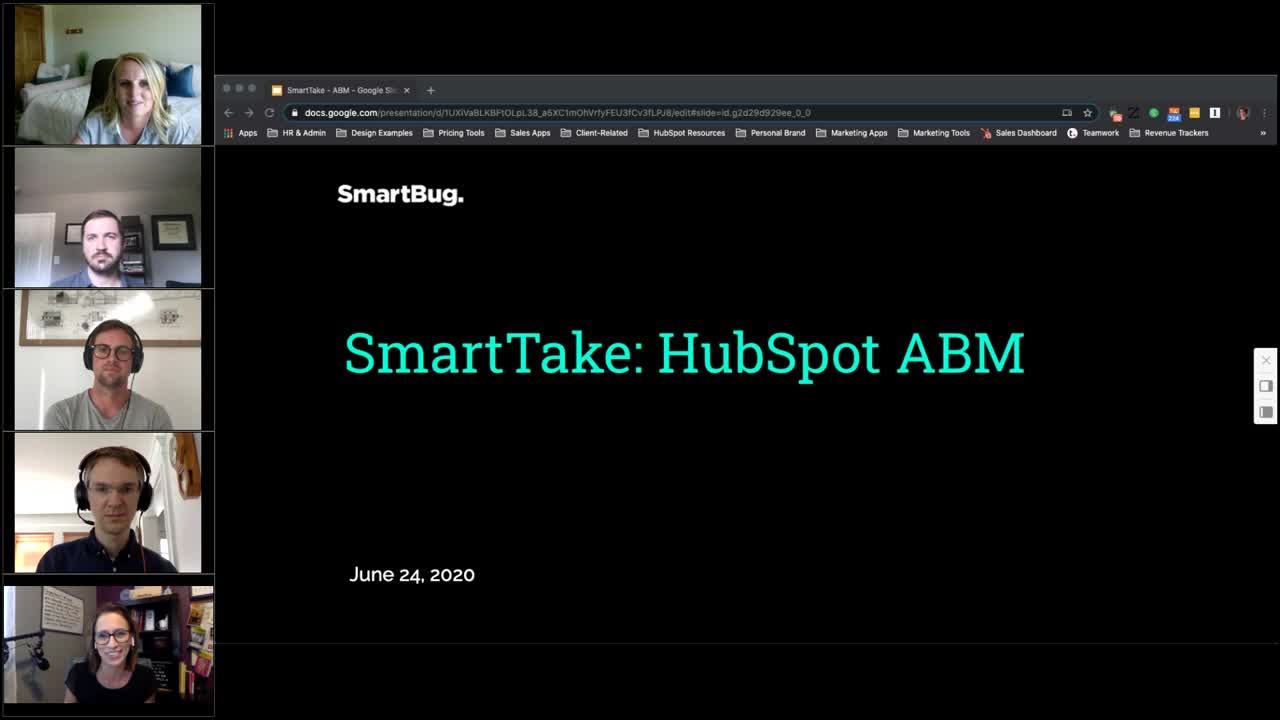
How to Get Started with ABM in HubSpot
June 12, 2020
As companies continue to leverage digital strategies to drive new leads and customers, account-based marketing (ABM) has quickly become a hot topic for marketers. The reason for this is that ABM allows businesses to take a more targeted approach to selling to companies and prospects.
Think of it like fishing with a spear rather than with a net. While traditional inbound marketing casts a wide net of blogs, e-books, white papers, and emails in an effort to attract visitors from search engines, account-based marketing (ABM) is more like spearfishing, where you identify exactly who you want to target and land as an account—and then you go hunting.
It’s important to note, however, that inbound and ABM don’t have to operate separately. In fact, the two tactics can work in tandem to generate more qualified leads.
There are many marketing automation softwares that can help execute ABM campaigns, and HubSpot has released its own set of tools for companies that use Marketing Hub Professional and Sales Hub Professional.
Before you kick off your first ABM campaign, let’s dive into how to get started with ABM in HubSpot, as well as some of the most important steps to take before launching.

Why Take an ABM Approach?
With ABM, you’re aiming to reach high-value customers and accounts that have a definite need for your product. You’re looking to engage the best-fit leads in the hopes that they’ll turn into customers.
Here are a few reasons why ABM is quickly gaining traction:
1. It’s highly personalized.
With ABM, you’re targeting individuals and accounts that are in the market or have a need for your product.
2. It eliminates unqualified leads.
In an ABM campaign, you have already identified your list or have a set of criteria for making sure you’re only going after qualified leads.
3. ROI can be easily measured.
By confirming which accounts turned into deals and customers, ABM allows marketers to measure ROI with more confidence than traditional inbound-only approaches.
Getting Started with an ABM Campaign in HubSpot
1. Identify Your Target Accounts
Before you kick off your first ABM campaign, you’ll need to identify the key accounts you’ll be going after (or spear fishing for). Ideally, these will be high-value accounts that are a good fit for your product or service.
In HubSpot, you should create a workflow that filters incoming leads based on specific criteria (industry, company size, and so on) and then tag those leads in your CRM. Do you have an ideal customer or account from the last year that you wish you could clone? Look at the characteristics of that deal and account, and base your workflow criteria on those same characteristics.
By leveraging a workflow like this, you’ll be able to build lists of tiered account targets, which is a key step toward identifying your most highly sought after accounts.
Pro Tip: Don’t assign more than 10 accounts per sales rep. This will ensure sales reps have enough time and resources to actively nurture their account targets once leads start coming in.
2. Determine Your Outreach Strategy and Timeline
The most important part of any marketing campaign is execution, and this is especially true when running an ABM campaign.
Ask yourself the following questions when building your ABM strategy:
- How long will the campaign run for?
- How will we market ourselves to target accounts? (emails, social media, paid media, direct mail)
- When should sales take over from marketing?
- What will sales outreach look like? (Determine the frequency of emails, calls.)
- What KPIs should we be measuring?
- How many accounts do we need to land for the campaign to be successful?
Typical ABM campaigns can last for up to eight weeks, with the first few weeks focused on marketing and nurturing target accounts, followed by outbound sales outreach. Building your strategy and outreach ahead of time will ensure that both marketing and sales are on the same page with regard to how the campaign will work and who’s responsible at each step.
3. Create a Seamless Handoff from Marketing to Sales
Have you ever called customer service to explain a problem, only to be placed on hold or transferred to another service rep who knows nothing about the issue you just described? A situation like this can be extremely frustrating and proves that seamless handoffs aren’t as easy as they might seem—even for some of the biggest companies around.
That’s why you should align your marketing and sales department before launching an ABM campaign. The handoff from marketing to sales needs to be seamless.
A service-level agreement (SLA) is often the best way to ensure that both sales and marketing clearly understand their responsibilities for the campaign.
Here are a few questions to ask your team as you create an SLA:
- Who are the people and what are the things that we need to know about each account?
- What channels will we use to share content or launch ads?
- At what point should sales outreach begin?
By spelling these out beforehand, you’ll ensure that both sales and marketing have the support they need to execute their part of the campaign.
4. Create Ads and Personalize Content
In order to attract high-level accounts and stakeholders, you’re going to need to capture their attention. With an ABM campaign, this is done by personalizing content.
Here are four common ABM tactics that can help you personalize content to your target accounts:
- Engage with accounts and individuals on social media by sharing helpful blogs and e-books you’ve created.
- Launch paid media/display ads that are relevant to the account/industry you’re targeting.
- Build custom landing pages tailored to the needs and interests of the account.
- Send personalized gifts or swag.
- Sponsor a booth at a target account’s event.
After you’ve identified how you will target accounts, verify that you’re set up to execute and track the campaign. Ensure that:
- All lists and target accounts have been identified.
- All paid ads are designed and ready to launch.
- All landing pages are functional and tagged with tracking links.
- All emails/templates are ready to be used.
- Any direct mail or gifts are ready and available to send.
- Reporting is set up in HubSpot to track progress.
5. Measuring Success with HubSpot Reports
“If you can’t measure it, you can’t improve it.” –Peter Drucker.
Just like you would with any other marketing campaign, make sure you identify KPIs and a way to analyze the results of your ABM efforts.
In HubSpot, some of the most commonly used metrics to track ABM performance are:
- Deal creation
- Account penetration (net-new contacts added to an account)
- Account engagement
- Deal-to-close time
- Net-new revenue
HubSpot’s new ABM tools allow you to add these reports to custom dashboards, making it easy to see exactly what’s happening at an account level.
Conclusion
ABM campaigns require a coordinated effort between your sales and marketing teams, which is why it’s so important to spell out exactly what you need from each team to be successful before you allocate any dollars or resources.
Follow these steps as you get started to make sure you identify what success looks like, what the outreach strategy will be, who to target, and how your team will measure success. This framework will give you the best opportunity for success as you start reaching out to target accounts.

About the author
Christopher Hutchens was formerly an E-commerce Marketing Strategist at SmartBug Media based in Salt Lake City. Originally from Chicago, Chris graduated from Mizzou and worked in Columbia, Missouri as an interactive project manager for five years before coming to SmartBug. Outside of work, Chris loves to travel, snowboard, and play/watch basketball. Read more articles by Christopher Hutchens.









